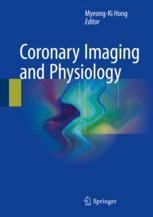

Most ebook files are in PDF format, so you can easily read them using various software such as Foxit Reader or directly on the Google Chrome browser.
Some ebook files are released by publishers in other formats such as .awz, .mobi, .epub, .fb2, etc. You may need to install specific software to read these formats on mobile/PC, such as Calibre.
Please read the tutorial at this link: https://ebookbell.com/faq
We offer FREE conversion to the popular formats you request; however, this may take some time. Therefore, right after payment, please email us, and we will try to provide the service as quickly as possible.
For some exceptional file formats or broken links (if any), please refrain from opening any disputes. Instead, email us first, and we will try to assist within a maximum of 6 hours.
EbookBell Team

5.0
108 reviewsThis book is intended as a guide for all cardiologists who are interested in coronary imaging and physiology, a sound understanding of which is vital for the optimal performance of appropriate coronary interventions. The basics of each relevant modality are presented, with clear explanation of clinical utility and evaluation of the evidence regarding clinical outcomes. All technical methods are described in detail, and the text is complemented by numerous helpful tables and illustrations.
The effectiveness of intravascular coronary imaging in improving clinical outcomes is proven, and it is widely used for this purpose. Two modalities for intravascular coronary imaging are available in clinical practice: intravascular ultrasound (IVUS) and optical coherence tomography (OCT). For coronary physiology, the pressure wire-derived fractional flow reserve (FFR) provides information on the functional status of coronary trees. This technique and its clinical applications receive particular attention in the book, which also looks beyond FFR to FFR-CT, a method using computational fluid dynamics, and to invasive assessment of the microcirculation.